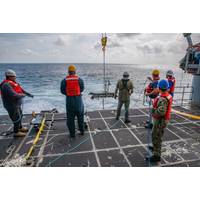
Wave Glider Launched from a US Navy Fast Transport Ship
U.S. Navy Sailors partnered with Military Sealift Command civilian mariners and civilian contractors in a collaborative effort to successfully launch a Liquid Robotics Wave Glider unmanned surface vehicle (USV) from expeditionary fast transport ship USNS Burlington (T-EPF 10), June 30, 2023.The launch took place during the Burlington’s transit to Cartagena, Colombia ahead of the start of UNITAS LXIV. Colombia is this year’s host for UNITAS, longest-running annual multinational maritime exercise in the world, scheduled to start on July 11, 2023.“UNITAS is so unique and full of opportuni
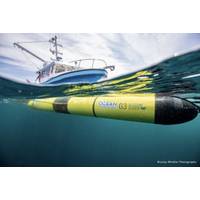
Marine Telemetry: Shedding Light Below the Waves
Marine telemetry can help species conservation and management in a changing climateAn OTN Liquid Robotics Wave Glider. © Nicolas Winkler PhotographyThe end of 2022 marked a potentially significant time for climate activists, scientists, and policymakers worldwide with two United Nations climate conventions—the 27th Climate Change Conference (COP27) in Egypt and the 15th Biodiversity Conference (COP15) in Canada. While neither represented the pivotal change that many hoped for—and argued was necessary—widespread dissatisfaction served as a sore reminder of the action still
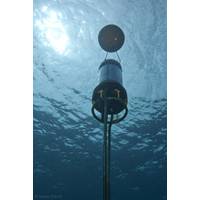
Teledyne Benthos Acoustic Modems Aid in Innovasea Fish Tracking
, we know our customers will be able to count on the VR4 to deliver important data day after day – no matter the conditions.”The topside acoustic modems can be carried by ships operated by personnel at sea, but the technology increasingly lends itself to autonomous vehicles such as the Liquid Robotics (Boeing) Wave Glider or Slocum underwater gliders from Teledyne Marine. These vehicles can be preprogrammed to fly past the known receiver locations and allow the seabed devices to upload the data every few months – more frequently than ship-led download operations and at a much lower
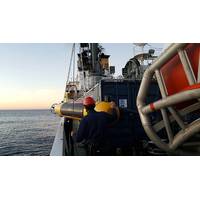
NATO employs MUSCLE Memory to Find Mines
with sidescan sonar and multi-beam echosounder (MBES) for reacquisition, and an IQUA Robotics SPARUS UUV with ARIS for reacquisition and simulated neutralization.If MUSCLE cannot communicate directly with one of its collaborating vehicles, it can use the gateway buoy on a USV such as CMRE’s LiquidRobotics WaveGlider, to relay messages from one submerged vehicle to another, or back to the host platform. “They all can perform different tasks,” Dugelay said. “For example, MUSCLE goes out, conducts the wide area survey, and finds the detections. BlackCAT has

Oi: Tracking 50 Years of Ocean Innovation
. “I may have had a mobile phone back then, it maybe worked in Europe, and, if it did, it was really expensive and I didn’t use it,” says Manley, who is founder at Just Innovation, and who has worked in the field of unmanned marine vehicles at Massachusetts Institute of Technology, Liquid Robotics and Teledyne Benthos. “Now, anywhere outside the U.S. my phone works.” The miniaturization and affordability of satellite data telemetry and positioning have driven advances in his world. “Crazy ideas we had in 2002, for unmanned surface craft, as we tried to call them, didn&rsquo
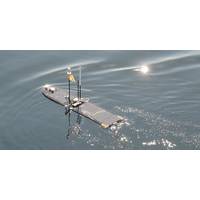
Scientists Complete 1700km Autonomous Acoustics Mission
A state-of-the-art technique for mapping and counting schools of fish has been tested on an autonomous marine platform in the North Sea, offering a new method for collecting data on fish stocks.The U.K.’s Centre for Environment, Fisheries and Aquaculture Science (Cefas) and U.S. based Liquid Robotics, A Boeing Company, have deployed, tested and recovered a remotely piloted Wave Glider, which was adapted to allow scientists to collect high quality broadband fisheries acoustics data.As part of a multi-vehicle mission under the U.K. NERC/Defra funded AlterEco project, the Wave Glider called
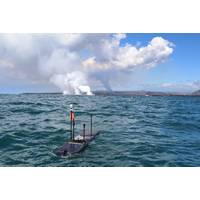
Ocean Robots Gather Live Data from Volcano Lava Flow
Two high-tech autonomous ocean robots have been deployed to capture live ocean data close to where lava is flowing into the ocean from Hawaii’s Kilauea Volcano.By using Liquid Robotics’ unmanned Wave Gliders, scientists have the rare opportunity to study the effects of the lava entering the ocean, the plume it creates and the interactions of the lava and seawater directly from the surface of the ocean. Scientists note that very few volcanic eruptions and lava flows have ever been monitored in real time from the ocean.Over a three-week mission, the long-duration wave and solar powered Wave
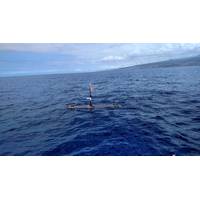
Wave Gliders to Study Arctic and Southern Oceans
Oceanographers will deploy long duration unmanned ocean robots called Wave Gliders as a sensor platform to conduct advanced scientific research in inhospitable and remote regions of the Arctic and Southern Oceans.Using Liquid Robotics’ wave and solar powered Wave Gliders, scientists from Scripps Institution of Oceanography (Scripps) and the Applied Physics Laboratory of the University of Washington (APL-UW) will obtain real time data and rare insights into the dynamic conditions that drive the world’s weather and climate. This data is critical for scientists to understand and improve
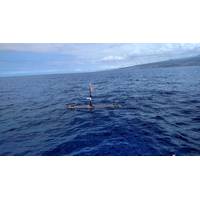
Wave Glider to Help Protect Marine Sanctuaries
New solutions to help protect and preserve the Hawaiian and American Samoa marine sanctuaries and monuments will be developed through a multi-year agreement between Liquid Robotics and NOAA’s Office of National Marine Sanctuaries (ONMS) Pacific Islands Region (PIR). At the core of the long-term environmental monitoring and surveillance of the Pacific’s most diverse and endangered underwater ecosystems will be Liquid Robotics’ Wave Glider, an autonomous surface ocean robot that will be used to help address long-term monitoring and scientific data collection gaps that are not



 February 2024
February 2024





